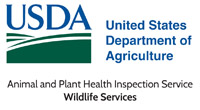United States Department of Agriculture: Animal and Plant Health Inspection Service

United States Department of Agriculture Wildlife Services: Staff Publications
Document Type
Article
Date of this Version
2013
Citation
Moulton, M.P., W.P. Cropper, Jr., and M.L. Avery. 2013. Is propagule size the critical factor in predicting introduction outcomes in passeriform birds? Biological Invasions 15: 1449-1458. doi: 10.1007/s10530-012-0383-x.
Abstract
Influential analyses of the propagule pressure hypothesis have been based on multiple bird species introduced to one region (e.g. New Zealand). These analyses implicitly assume that species-level and site-level characteristics are less important than the number of individuals released. In this study we compared records of passerine introductions with propagule size information across multiple regions (New Zealand, Australia, and North America). We excluded species introduced to just one of the three regions or with significant uncertainty in the historical record, as well as species that succeeded or failed in all regions. Because it is often impossible to attribute success to any single event or combination of events, our analysis compared randomly selected propagule sizes of unsuccessful introductions with those of successful introductions. Using Monte Carlo repeated sampling we found no statistical support for the propagule pressure hypothesis, even when using assumptions biased toward showing an effect.


Comments
U.S. government work.